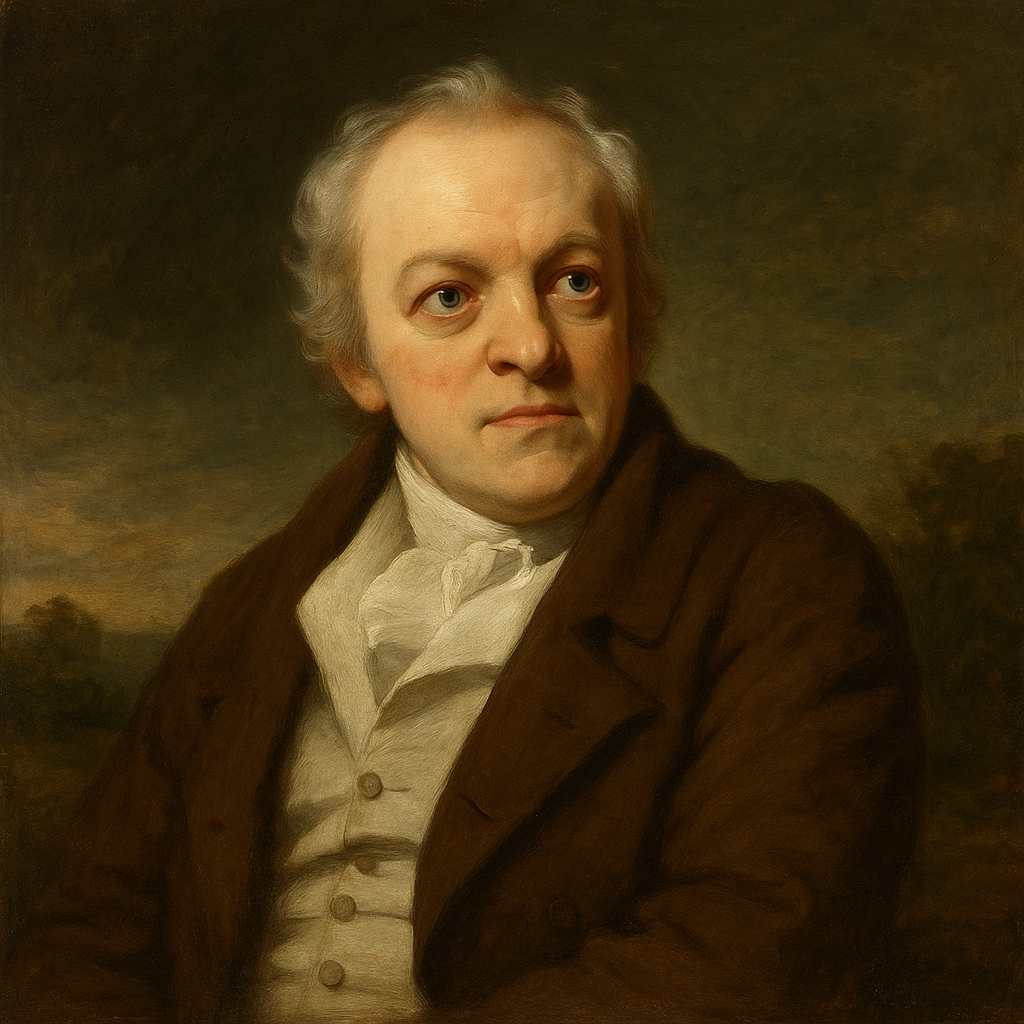The Shepherd
William Blake
1757 to 1827

How sweet is the shepherd’s sweet lot!
From the morn to the evening he strays;
He shall follow his sheep all the day,
And his tongue shall be fillèd with praise.
For he hears the lambs’ innocent call,
And he hears the ewes’ tender reply;
He is watchful while they are in peace,
For they know when their shepherd is nigh.
William Blake's The Shepherd
Introduction
William Blake's poem "The Shepherd" is a deceptively simple pastoral lyric that belies a complex interplay of themes, imagery, and religious symbolism. This eight-line poem, part of Blake's "Songs of Innocence" collection published in 1789, presents a seemingly idyllic portrayal of pastoral life. However, upon closer examination, the poem reveals layers of meaning that extend far beyond its surface-level depiction of a shepherd's daily routine. This analysis will delve into the various elements of the poem, exploring its form, language, imagery, and thematic concerns, while also situating it within the broader context of Blake's work and the Romantic movement.
Form and Structure
The poem consists of two quatrains, each following an ABAB rhyme scheme. This simple, song-like structure aligns with the poem's placement in "Songs of Innocence" and contributes to its pastoral tone. The regularity of the rhyme and meter (primarily iambic tetrameter) creates a sense of harmony and order, mirroring the peaceful existence described in the poem.
However, Blake introduces subtle variations in the rhythm, particularly in the first and third lines of each stanza. The exclamation in the first line, "How sweet is the shepherd's sweet lot!" disrupts the expected iambic pattern, drawing attention to the speaker's enthusiasm. Similarly, the third line of each stanza begins with an unstressed syllable, creating a gentle lilt that echoes the shepherd's meandering movements.
Language and Imagery
Blake's choice of language in "The Shepherd" is characterized by its simplicity and repetition, which contribute to the poem's musical quality and reinforce its themes. The repetition of "sweet" in the opening line emphasizes the idyllic nature of the shepherd's life, while also hinting at a possible irony or naivety in this perspective.
The poem is rich in pastoral imagery, presenting a romanticized view of rural life. The shepherd's day is described in broad strokes, from "morn to the evening," suggesting a timeless quality to his existence. The verb "strays" in the second line is particularly evocative, implying a freedom of movement and lack of constraints that contrasts with the often harsh realities of agricultural labor.
Blake's use of personification and anthropomorphism is subtle but significant. The sheep are given human qualities, with their calls described as "innocent" and their replies as "tender." This attribution of human characteristics to animals is a common feature in Blake's work, often serving to blur the boundaries between the natural and the spiritual worlds.
Thematic Analysis
At its core, "The Shepherd" explores themes of innocence, harmony with nature, and spiritual fulfillment. The shepherd's contentment and constant praise suggest a state of spiritual bliss, aligning with Blake's concept of "innocence" as a state of untroubled joy and connection with the divine.
The relationship between the shepherd and his flock is central to the poem's thematic concerns. The mutual awareness and trust between them ("For they know when their shepherd is nigh") creates a sense of harmony and interconnectedness. This relationship can be read on multiple levels:
- As a straightforward depiction of pastoral life
- As an allegory for the relationship between God and humanity
- As a metaphor for the ideal relationship between political leaders and their constituents
The religious symbolism is particularly potent, given the long-standing use of the shepherd as a metaphor for spiritual leadership in Judeo-Christian traditions. The image of the shepherd whose "tongue shall be fillèd with praise" evokes biblical passages, particularly Psalms, where David (himself a shepherd before becoming king) offers constant praise to God.
Context within Blake's Work
"The Shepherd" must be considered within the larger framework of Blake's "Songs of Innocence and of Experience." As part of the "Innocence" section, this poem represents an unspoiled, idealized state of being. However, readers familiar with Blake's work will be aware that this state of innocence is often contrasted with the harsher realities presented in the "Experience" poems.
The simplicity and contentment depicted in "The Shepherd" stand in stark contrast to poems like "The Chimney Sweeper" or "London" from "Songs of Experience," which expose the dark underbelly of industrial society and institutional corruption. This contrast raises questions about the nature of the innocence portrayed in "The Shepherd": Is it a genuine state of grace, or a naive ignorance of harsh realities?
Blake and Romanticism
"The Shepherd" exemplifies many of the characteristics associated with Romantic poetry. Its focus on nature, emotion, and individual experience aligns with the movement's rejection of industrialization and emphasis on the sublime in the natural world. The poem's pastoral setting and idealization of rural life reflect the Romantic fascination with unspoiled landscapes and simpler ways of living.
However, Blake's approach to these themes is unique. While many Romantic poets sought transcendence through nature, Blake's vision is more complex. The natural world in "The Shepherd" is not just a source of beauty or inspiration, but a realm infused with spiritual significance. The harmony between the shepherd and his flock suggests a deeper cosmic order, reflecting Blake's idiosyncratic spiritual beliefs.
Critical Interpretations
Scholarly interpretations of "The Shepherd" have varied widely over the years. Some critics view the poem as a straightforward celebration of pastoral innocence, while others see it as laden with irony, questioning the very innocence it seems to portray.
One school of thought interprets the poem through a political lens, seeing the shepherd as a representation of ideal leadership. In this reading, the shepherd's attentiveness to his flock and their trust in him become a model for benevolent governance, contrasting sharply with the corrupt institutions Blake critiques elsewhere in his work.
Other critics focus on the poem's religious dimensions, exploring how it reflects Blake's unorthodox spiritual views. The shepherd's constant praise and intimate connection with his charges can be seen as representing Blake's ideal of unmediated spiritual experience, free from the constraints of organized religion.
Feminist readings of the poem have noted the absence of female figures, apart from the briefly mentioned ewes. This absence can be seen as reflecting the patriarchal structures of both religious and political leadership in Blake's time.
Conclusion
"The Shepherd" by William Blake is a multifaceted work that rewards close reading and analysis. Its apparent simplicity masks a complex engagement with themes of innocence, spirituality, and the relationship between humanity and the natural world. The poem's pastoral imagery and lyrical quality create an immediate sense of peace and harmony, while its deeper resonances invite a range of interpretations.
Situated within Blake's larger body of work, "The Shepherd" serves as a touchstone for his concept of innocence, while also anticipating the more complex and often darker themes explored in his later writings. Its enduring appeal lies not just in its beautiful imagery and musical language, but in its capacity to evoke a state of grace that remains compelling in our increasingly complex and fractured world.
As with much of Blake's work, "The Shepherd" continues to inspire debate and analysis, its meanings shifting and evolving with each new generation of readers. It stands as a testament to Blake's artistic vision and his ability to infuse seemingly simple verses with profound philosophical and spiritual significance.
This text was generated by AI and is for reference only. Learn more
Want to join the discussion? Reopen or create a unique username to comment. No personal details required!



Comments
No comments yet. Be the first to comment!